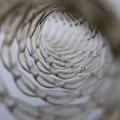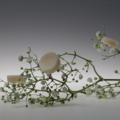More about the project:
One common influence of ageing is that it makes an individual susceptible to hypothermia, which is known to be causing low body temperature (35°C). Hypothermia could be detected at early stages by monitoring various physiological parameters such as ECG signal, skin temperature and body movement. Owing to their flexibility and stretchability, wearable sensors could provide long-term continuous recordings of electrophysiological activity for monitoring hypothermia in elderly people.
Wearable temperature, pressure and strain sensors were studied in various forms by many research groups. Those approaches utilized complex and high-cost photolithography techniques, which make the devices very difficult to commercialize. Besides, poor processability and lack of skin compatibility of stretchable polymers, used as substrates, prevent the practical use of these materials. However, solution-processable nanomaterials offer a unique way to reduce the cost and complexity, while cellulose hydrogel is an easy-processable and skin friendly polymer.
Thus, in this project, we aim to develop an integrated wearable temperature and pressure/strain sensor based on solution-processable nanowires and cellulose hydrogel to monitor hypothermia in elderly people via measuring pressure, strain and temperature. The pressure/strain sensor will be prepared via laminating two silver nanowire printed cellulose hydrogels sandwiching a pressure-sensitive dielectric layer. The temperature sensor will be fabricated via transfer printing of gold nanowires on the cellulose hydrogel substrate. Next, the pressure/strain and temperature sensors will be laminated to form the integrated sensor. Finally, the sensors will be used to treat real patients.










